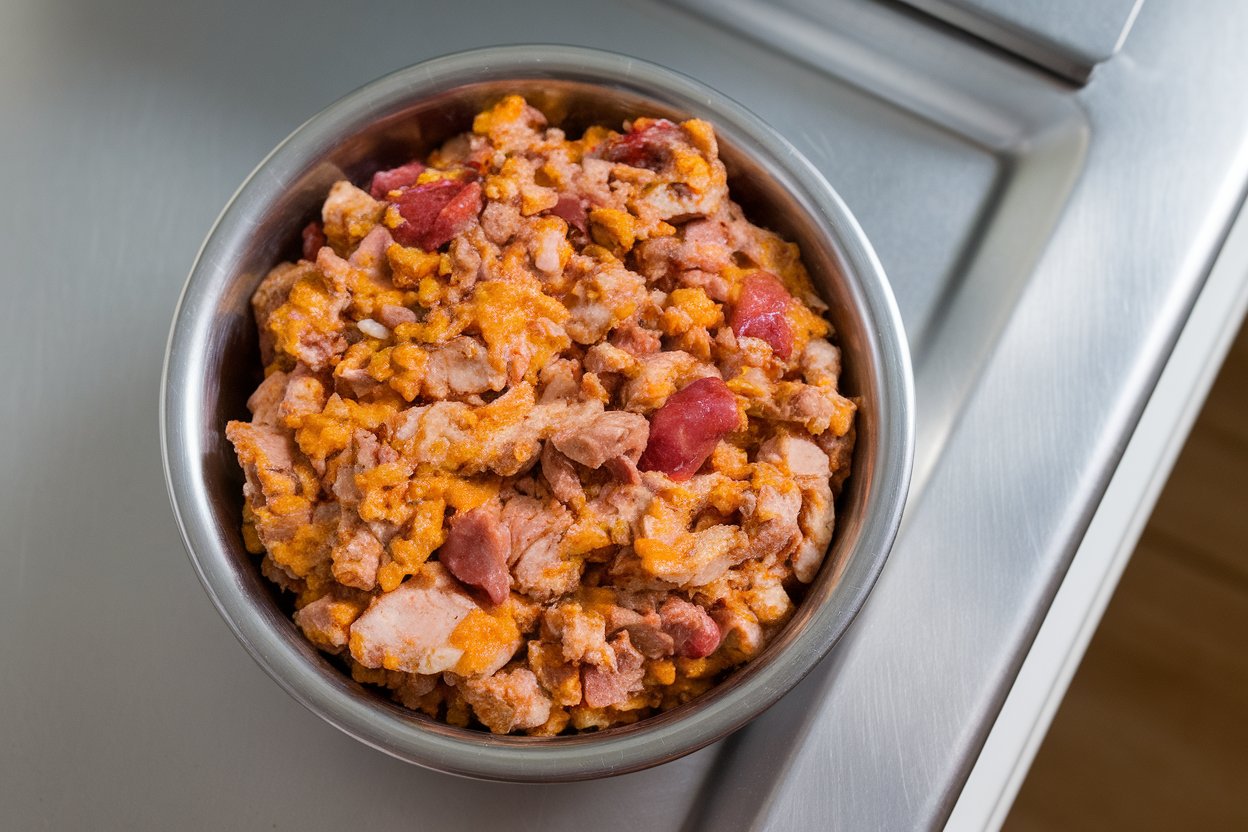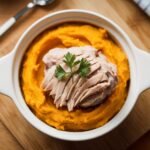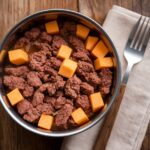DIY Cat Food With Taurine: The Purrfect Power-Up Your Feline Actually Craves
Think your cat is picky? Try feeding them something made to fuel their predator DNA, not a cereal aisle. This DIY Cat Food With Taurine gives you control over quality, taste, and nutrition—without the mystery ingredients.
You’ll spend less time reading labels and more time watching a happy, energetic cat do zoomies. Plus, it’s not hard. You just need the right plan, the right supplement, and a little patience (cats aren’t exactly known for change management).
What Makes This Special
This recipe centers your cat’s real needs: animal protein, healthy fats, and taurine—the essential amino acid cats can’t make on their own.
Store-bought food isn’t bad, but it can be a black box. Here, you’ll know exactly what’s going into the bowl.

We use a balanced mix of muscle meat, heart, and liver to mirror a prey-based diet, then back it up with a measured dose of taurine and critical micronutrients. It’s budget-friendly, batch-friendly, and freezer-friendly.
Also, flavor-friendly—because cats have opinions.
Ingredients Breakdown
- Chicken thighs, skin-on, bone-out (2 lbs / ~900 g): High-quality protein and fat for energy and taste.
- Chicken hearts (8 oz / ~225 g): Natural taurine boost and essential co-factors.
- Chicken liver (4 oz / ~115 g): Vitamin A, B vitamins, copper—potent but use in moderation.
- Egg yolks (2 large): Choline, biotin, fats for coat and brain health.
- Taurine powder (1,000–1,500 mg total): Insurance policy; grinding and cooking reduce natural taurine. Start at 1,250 mg per batch.
- Salmon oil (2 tsp): EPA/DHA for skin, joints, heart. Choose a pet-safe, tested brand.
- Bone meal powder (2 tsp) or calcium carbonate (1.5 tsp): Balances phosphorus from meat; critical for bones/kidneys.
- Water or no-salt chicken broth (1/2–3/4 cup): Helps texture and hydration.
- Optional: Pumpkin puree (2 tbsp): Gentle fiber for digestion.
- Optional: Iodized source (tiny pinch of kelp powder or 1/8 tsp iodized salt): Supports thyroid; don’t overdo it.
- Optional: Vitamin E (200 IU) and B-complex capsule: Helpful micronutrient safety net, especially if freezing long-term.
The Method – Instructions
- Prep your station: Clean surfaces, bowls, and grinder or food processor.
Cold tools help keep meat at safe temps.
- Trim and chop: Cut chicken thighs into 1-inch pieces. Keep some skin for fat; remove excess if your cat needs fewer calories.
- Add organs: Roughly chop hearts and liver. Keep liver to the measured amount—more isn’t better.
- Grind or pulse: Use a meat grinder for best texture.
If using a food processor, pulse in short bursts to a coarse mince. Cats like texture; avoid paste.
- Mix the slurry: In a separate bowl, whisk water/broth, egg yolks, salmon oil, taurine powder, bone meal or calcium, and optional vitamins. This disperses supplements evenly.
- Combine: Pour the slurry over the meat and organs.
Fold with a spatula until uniform. Add pumpkin if using.
- Test taste and texture: Offer a tiny sample raw for a sniff test. If your cat hesitates, warm a spoonful slightly (not hot) to release aroma.
- Portion: Spoon into meal-sized containers or silicone trays (2–4 oz portions depending on your cat).
- Serve or freeze: Refrigerate what you’ll use within 24–48 hours.
Freeze the rest immediately.
- Transition gradually: Start with 25% new food mixed into their current food for 2–3 days, then 50%, 75%, and finally 100% over a week. Your carpet will thank you.
How to Store
- Fridge: 24–48 hours max at or below 40°F (4°C). Keep covered to prevent oxidation.
- Freezer: Up to 2–3 months in airtight containers.
Label with date and batch notes.
- Thawing: Overnight in the fridge. Never room-temp thaw for hours. If needed, place the sealed portion in cool water for quicker thawing.
- Reheating: Don’t cook it.
Briefly warm the serving by placing the container in warm water to bring it just above room temp.
Nutritional Perks
- Taurine for heart and vision: Supports cardiac function and retinal health. It’s non-negotiable for cats.
- High animal protein: Fuels lean muscle and a sleek coat. Cats are obligate carnivores—plants are optional at best.
- Balanced calcium-to-phosphorus: Protects bones and kidneys long-term.
That’s why bone meal or calcium is mandatory.
- Omega-3s from salmon oil: Shinier coat, calmer skin, joint support. Also helps picky eaters buy in.
- Micronutrient coverage: Liver and yolks deliver vitamins A, D (trace), E, K, and B-complex. Optional supplements fill gaps, IMO a smart move.
Avoid These Mistakes
- Skipping taurine: Grinding, freezing, and cooking reduce natural taurine.
Always supplement.
- No calcium source: Meat alone is phosphorus-heavy. Without calcium, you’re courting deficiencies and kidney strain.
- Overloading liver: More than ~5% of the mix can lead to vitamin A toxicity. Measure it.
- Using onions/garlic: Toxic to cats, even in small amounts.
No alliums, ever.
- Warming in the microwave: Hot spots and nutrient damage. If you must, use the lowest setting and stir thoroughly—but warm water bath is better.
- Sudden full switch: GI upset city. Transition gradually.
- Guessing measurements: Use a scale and measuring spoons.
Precision beats vibes.
Different Ways to Make This
- Turkey variant: Swap chicken thighs for turkey thighs. Keep hearts/liver amounts similar; adjust fat with a bit more skin or an extra tsp of oil.
- Rabbit and chicken heart mix: Lean and highly digestible. Add salmon oil and ensure enough calcium.
- Lightly cooked version: Briefly sear the exterior of meat for palatability while keeping the interior rare.
Let it cool, then mix in supplements. Do not cook the supplements.
- Allergy-friendly: If chicken is an issue, try pork shoulder plus turkey hearts, keeping the same taurine and calcium strategy.
- Texture tweaks: Half-minced, half-chunked for cats who like to chew. Keeps them engaged and slows eating.
FAQ
Is taurine absolutely necessary?
Yes.
Cats can’t synthesize enough taurine, and deficiency risks heart disease (DCM) and vision loss. Even with heart meat included, supplementing taurine is a must for safety.
How much should I feed my cat per day?
General starting point: 2–4% of ideal body weight per day. For a 10-lb (4.5-kg) cat, that’s roughly 3–5 oz (85–140 g) total, split into 2 meals.
Adjust based on body condition and activity.
Can I make a big batch and freeze it?
Totally. Portion into single meals, freeze up to 2–3 months, and thaw in the fridge. Add labels so you can track what your cat liked best—because they will change their mind.
What if my vet is skeptical?
Share the recipe, ingredients, and feeding amounts.
Many vets support well-formulated homemade diets. For extra assurance, ask about a nutrition consult and consider occasional bloodwork to confirm balance.
Can I use fish instead of salmon oil?
Small amounts of canned sardines in water (no salt) can sub occasionally. However, oil is more consistent for EPA/DHA.
Avoid high-mercury fish and keep total fishy meals to a couple times per week.
Do I need a grinder?
It helps, but a food processor works if you pulse carefully. Aim for a coarse mince, not baby food. Some cats prefer small chunks mixed in.
Is raw safe?
Use fresh, high-quality meat, clean tools, and proper storage.
Immunocompromised households may prefer lightly cooked. Either way, add supplements after cooking or at low temps to preserve potency.
What signs show the diet works?
Shiny coat, consistent energy, small well-formed stools, and good hydration. Weigh monthly and adjust portions.
If you see dull coat, lethargy, or weight swings, reassess the recipe and consult your vet.
In Conclusion
DIY Cat Food With Taurine gives you control, clarity, and a happier cat. It’s not complicated—just precise. Hit the essentials: quality meat, organs in check, calcium balanced, taurine topped up, and omega-3s for good measure.
Store smart, transition slowly, and take notes on what your feline CEO approves. The payoff? Better health, better coat, and that smug feeling when your cat actually finishes the bowl.

I’ve spent 10+ years in dog training, digging into what makes dogs (and their humans) tick. At Smart Dog Learning, I share my no-nonsense, fun approach to training so you can enjoy life with a well-behaved, happy pup—no boring lectures, just practical results 😉





